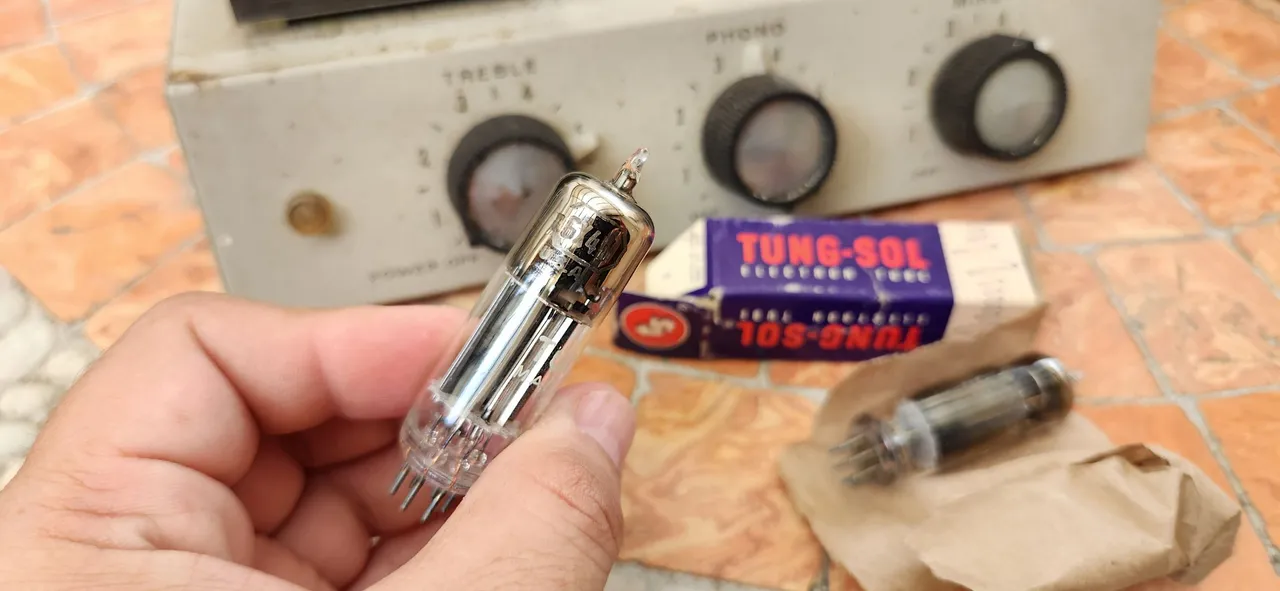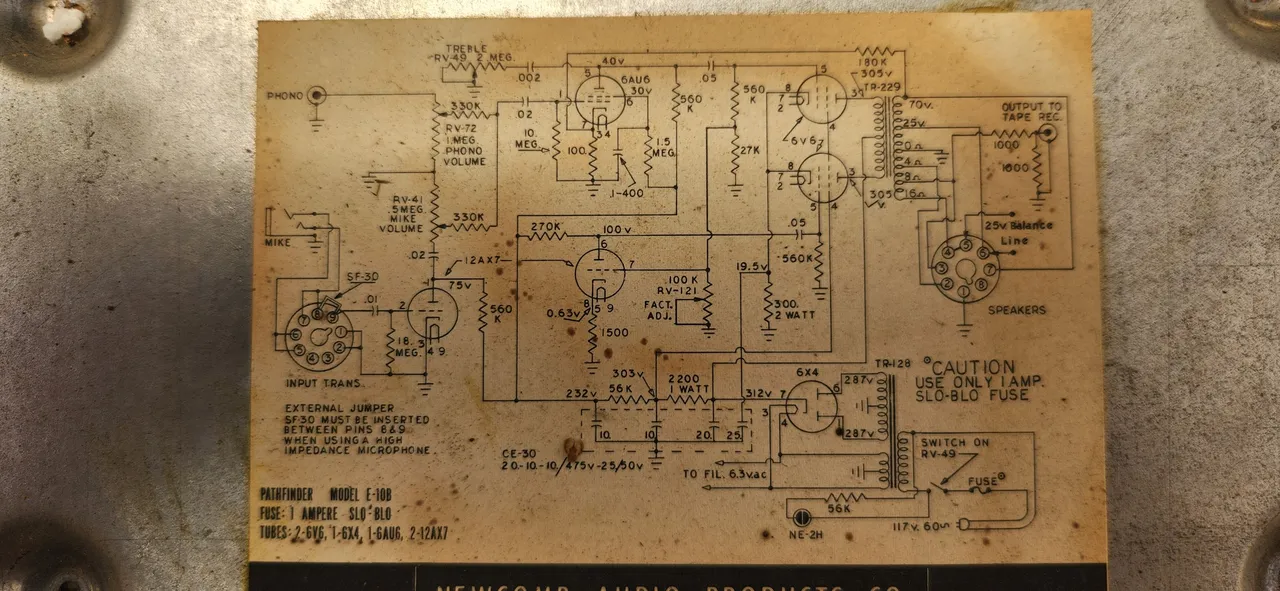
Today, the replacement tube for the old amp I found and am restoring arrived. It’s an old Newcomb Pathfinder E10B, a respectable brand back in the 50s.

My plan is to turn it into an electric guitar amplifier. I’ve done this before, and I really enjoy it. I have a couple of articles on my blog, neomano.com, about previous restorations.
I find vintage technology fascinating, and tubes are something that really catch my attention.
The thing is, I hit my first snag: a damaged rectifier tube. So, I had to search for a replacement part on eBay. Luckily, it’s not too hard to find old tubes in good condition because of a curious twist in history: when tube technology was at its peak, transistors suddenly arrived, making everything obsolete. Millions of tubes were left in warehouses, stored in huge quantities. So, even today, you can still find tubes from over 60 years ago with enough vacuum to function.
The catch is that I live in Ecuador, and buying a tube on eBay and getting it here is a logistical adventure that takes three weeks. If I’m lucky and the stars align, I might get it in two weeks. Sometimes Ecuador’s customs (which is a headache) doesn’t make things too difficult, but that’s the exception.
In any case, after three weeks of waiting, my 6X4 tube is finally here, and it works!
I’ll document the process, but first, I wanted to share something interesting.
Back in the early days of electronics, it was common for manufacturers to include the amplifier’s electrical schematic diagram, making repairs even easier. There wasn’t the fear of copying like there is now, where it’s unthinkable to have easy access to the electronic diagram of an amplifier, laptop, or other device. Basically, today’s culture encourages us to just buy a new one and throw the old one away if it breaks.

Anyway, nostalgia for times when we thought differently.
If I see that people are interested, I’ll keep you updated on the progress.
A hug.
El día de hoy llegó mi tubo de reemplazo para el viejo amp que me encontré y que estoy reparando. Es un viejo Pathfinder newcomb E10B, solía ser una marca respetable allá por los años 50s.
Mi idea es convertirlo en un amplificador de guitarra eléctrica. Ya he hecho esto antes y la verdad me gusta mucho. Tengo un par de artículos en mi blog neomano.com de restauraciones anteriores.
Me parece apasionante el tema de la tecnología antigua y los tubos son algo que realmente me llama la atención.
El asunto es que me topé con el primer escollo y fue un tubo rectificador dañado, así que tuve que buscar una parte de reemplazo en ebay. Por suerte, no es muy difícil conseguir tubos antiguos en buena forma, porque sucedió algo curioso en la historia: cuando la tecnología de tubos estaba en su climax, en su máximo apogeo, llegó de golpe el transistor, haciendo obsoleto todo. Millones de tubos quedaron en bodegas, sin más, almacenados en grandes cantidades. Así que hoy por hoy, todavía se pueden conseguir tubos de hace más de 60 años, aun con el vacío suficiente para poder funcionar.
El caso es que vivo en Ecuador, y comprar un tubo en ebay y traerlo es toda una aventura logística que toma 3 semanas. Cuando ando con suerte y se alinean los planetas puedo tenerlo en 2 semanas, hay ocasiones en que la aduana de Ecuador (que es un dolor de cabeza) hace que las cosas no sean tan difíciles, pero es la excepción.
En todo caso, después de 3 semanas de espera, mi tubo 6X4 está aquí finalmente y funciona!
Documentaré el proceso, pero antes quería mostrar algo interesante.
En esta época de incipente electrónica era común que el fabricante incluyera el diagrama esquemático eléctrico del amplificador, haciendo que fuese aun más sencillo repararlo. No había celo de copia como ahora, donde es impensable que exista un acceso fácil al diagrama electrónico de un amplificador, laptop u otro dispositivo electrónico. Básicamente porque la cultura ahora nos invita a que, si se daña, pues, se compra otro y se tira a la basura el anterior.
En fin. Nostalgia de tiempos donde pensabamos diferente.
Si veo que gusta la idea, los iré poniendo al tanto del progreso.
Un abrazo.